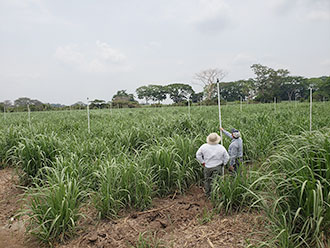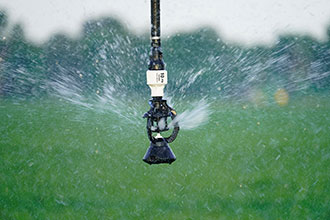
Farming faces challenges from unpredictable weather patterns and fluctuating temperatures. Couple that with the sting of electricity costs ranging from 10c to 22c per kWh, and the affordability of farm irrigation systems is under scrutiny. As energy prices soar, the economic viability of these systems may decline.
However, a silver lining exists. To ensure farm profitability, tweaking irrigation practices becomes essential. Consider this: most of a farm's energy consumption often goes to water pumping for field watering systems. The good news? Advancements in irrigation methods and tech solutions allow reduced energy requirements without compromising water efficiency.
Low-Pressure Sprinklers: The Path to Savings
Regardless of your water source—be it rivers, streams, or aquifers—drawing water for irrigation consumes substantial energy. Regrettably, many farm irrigation systems still employ high-pressure impact sprinklers, which work between 30 to 60 psi (2 to 4 bar). These sprinklers demand rapid water flow to sustain their irrigation patterns.
Enter modern sprinkler irrigation systems. These champions operate on a low-pressure range of 10 to 25 psi (0.7 to 1.7 bar). The result? Reduced pump demands without compromising water flow to crops. Farmers can downsize pumps or adjust impellers to cut back on horsepower needs.
But the advantages don't end there. Several types of sprinklers operating at low pressures also enhance irrigation efficiency. Unlike their high-pressure counterparts that release water droplets susceptible to wind and evaporation, low-pressure sprinklers emit larger, wind-resistant droplets. A quality low-pressure system boasts a distribution uniformity exceeding 95%. With minimal water wastage, these systems can operate for shorter durations. Some, like the Senninger Wobbler® sprinklers, mimic light rain, preserving the soil's absorption ability and ensuring optimal water in plant root zones. In contrast, impact sprinklers can cause soil surface disturbances and run-off, taking longer to irrigate their target areas.
The Cost Factor
 The specific energy savings hinge on factors like the irrigation system, operational hours, and water flow. Yet, with farm irrigation sprinklers like the Wobbler sprinklers, farmers can anticipate about 50% in energy savings. To put it in perspective, a typical system operating 1000 hours yearly at 14 cents per kW hour could save around $2667 US dollars per acre annually by opting for 25 psi sprinklers. That's an impressive 58% saving!
The specific energy savings hinge on factors like the irrigation system, operational hours, and water flow. Yet, with farm irrigation sprinklers like the Wobbler sprinklers, farmers can anticipate about 50% in energy savings. To put it in perspective, a typical system operating 1000 hours yearly at 14 cents per kW hour could save around $2667 US dollars per acre annually by opting for 25 psi sprinklers. That's an impressive 58% saving!
A Word of Caution
Merely reducing the pressure in your farm irrigation systems isn't the endgame. Sprinklers crafted for higher pressures won't fare well at reduced pressures. The applicators must function within their designated flow and pressure ranges to ensure water distribution uniformity. Using impact sprinklers at 10 to 15 psi pressures can cause water wastage and soil sealing.
When venturing into low-pressure sprinkler territory, farmers must ensure these applicators are designed for such operation. While the definition of "low pressure" may differ among manufacturers, they generally accept that pressures above 30 psi (2 bar) indicate mid to high-range sprinklers.

